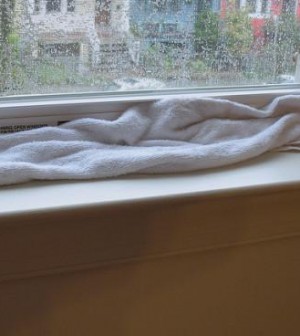- 4 Unexpected Things I’ve Learned From Buying My First Mobile Home Park
- How Ironic: America’s Rent-Controlled Cities Are Its Least Affordable
- U.S. homes are still a bargain on the international market
- Getting The Best Possible Quality Photos On MLSs and Syndicated Sites
- Home buyers in these markets have the upper hand
6 Items Your Home Inspector May Not Catch

You’ve signed the contract. Time to start picking out furniture for your new place, right? Not so fast.
As easy as it is to settle into your new role as a homeowner, there’s an important step that shouldn’t be overlooked: the home inspection.
Bill Loden, president of the American Society of Home Inspectors (ASHI), has been inspecting homes for the past 10 years. The ASHI believes strongly in continuing education, but he says some home headaches simply don’t reveal themselves during a standard inspection. And, some things are outside an inspector’s scope.
“There are things homeowners think we can do, but we can’t,” he explained. “And, honestly, most people don’t want to pay for [a specialist].”
To get the most value from your home inspection, it’s important to know a few things that might be missed.
Partially blocked or damaged sewer lines
Like some illnesses, some house problems don’t show up overnight. A partially blocked or damaged sewer line often falls in this camp.
“We’ll run water through the fixtures, but we’re there for a limited time,” Loden explained. “Two to four hours might not be long enough for the problem to reveal itself.”
Inspectors will likely determine the type of drain pipe used and estimate its age. They may also look for trees or stumps in the line of the sewer pipe that could cause damage. However, when it comes to sewer-pipe scoping (sending a camera down the line), it’s not typically included in a standard inspection.
Failing HVAC equipment
Similar to damaged sewer lines, HVAC equipment can be fine one day and stop working the next.
“If I check an air conditioner when temperatures are moderate, it can seem fine,” Loden explained. “But under stress, when temperatures shoot up, it can fail.”
Loden says inspectors can bring an HVAC contractor with them for the inspection, but typically it’s not worth the investment when you compare the cost to buying a new unit.
“It will cost anywhere from $3,000 to $5,000 [to hire a contractor] and could take two to three days to complete,” he said.
Cracked heat exchanger
One exception where you may want to pay for a HVAC contractor is an old furnace.
“In my area in Alabama, we have a lot of package units [furnace/AC combined] that sit outside. It’s not part of the standard inspection to examine the heat exchanger, but a lot of them develop cracks that can allow the indoor air to mix with combustion air that has carbon monoxide,” he explained. “You don’t want that in the house.”
As a general rule, Loden recommends having a HVAC contractor come out to examine the heat exchanger if a furnace is more than 10 years old.
“If the HVAC contractor does find such a crack, by law he has to replace it before the furnace can be used again,” he said.
Electrical problems
Loden says the best way to think about a standard home inspection is a “visual inspection” because when it comes to electrical issues, inspectors can’t always determine the source of the problem.
“If I find a receptacle that doesn’t have ground, I know it’s disconnected somewhere, but I don’t know where,” he said. “You’re going to have to have an electrician find the disconnect in the system.”
Structural issues
A legitimate question you might be asking is whether the roof is sagging or whether it’s part of the architectural style of your new home. Luckily, a home inspector should be able to tell.
“All roofs — at least wood roofs — will have some…




 100% Secure
100% Secure
You must be logged in to post a comment Login